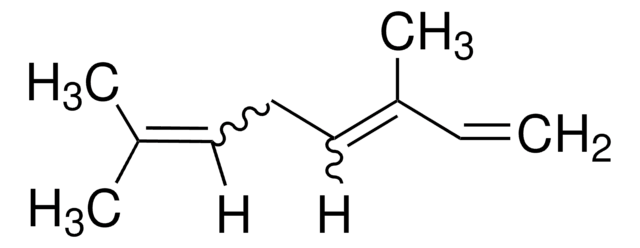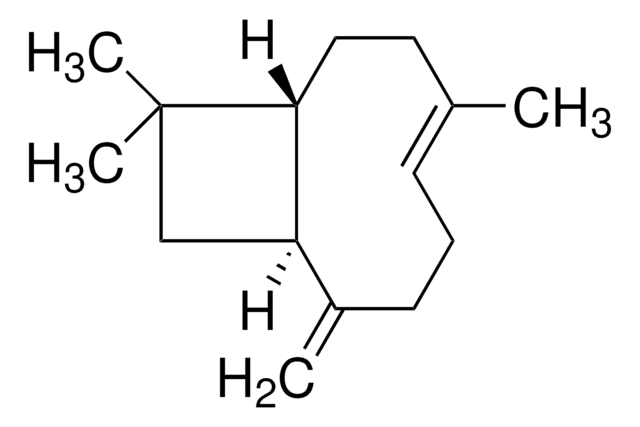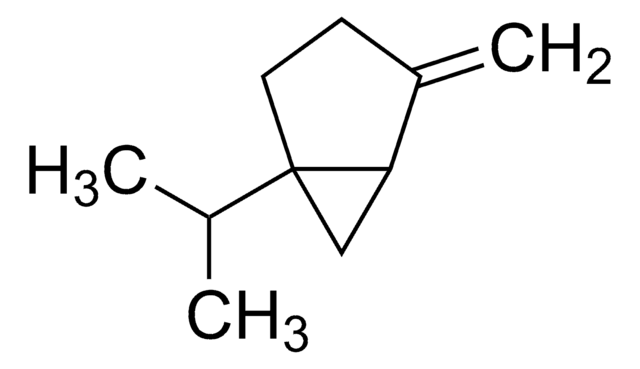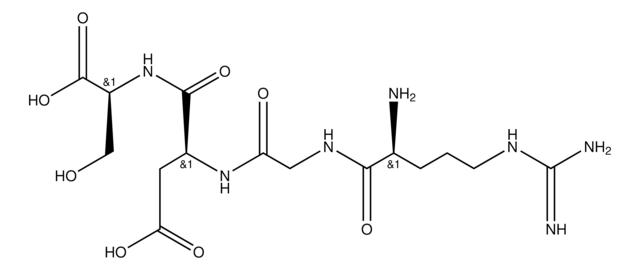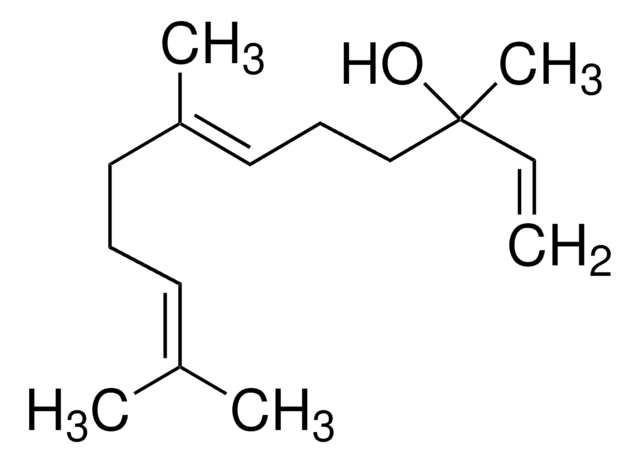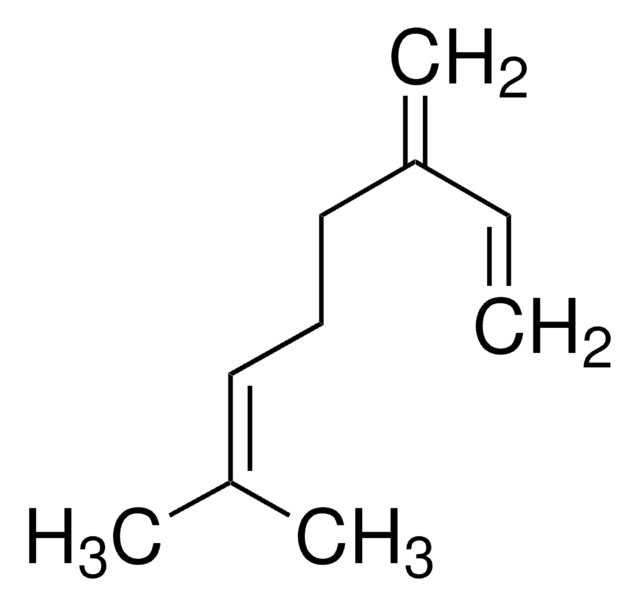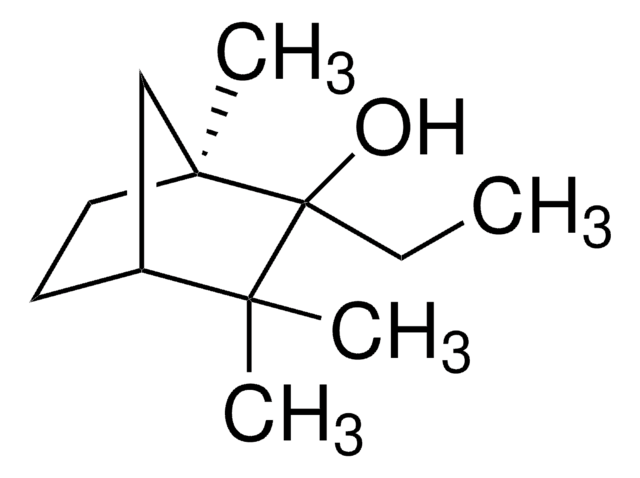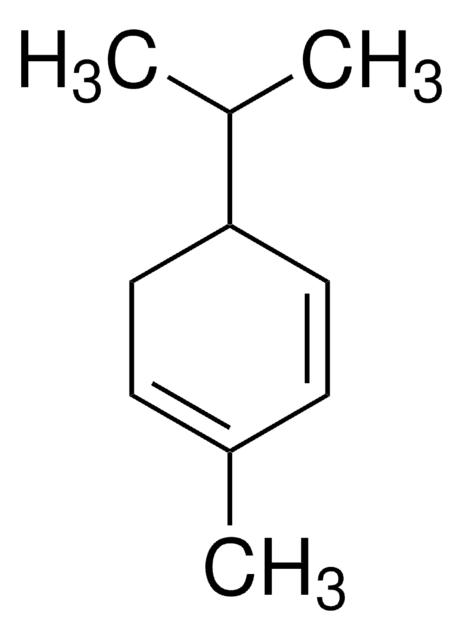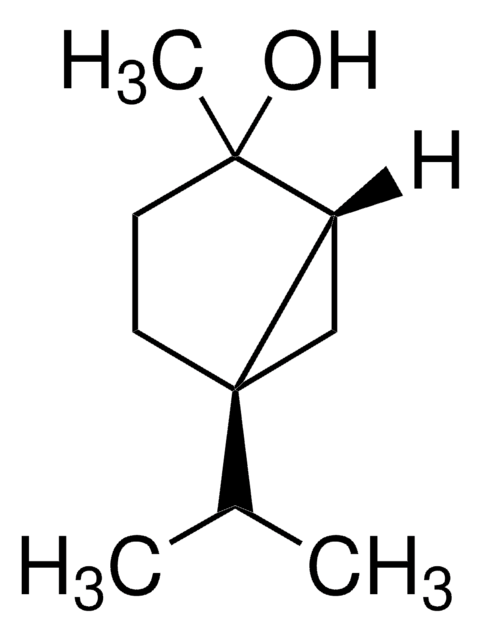Wichtige Dokumente
W353901
Ocimen
mixture of isomers, stabilized, ≥90%
Synonym(e):
3,7-Dimethyl-1,3,6-octatrien, 3,7-Dimethyl-1,3,6-octatrien, Isomerengemisch
About This Item
Empfohlene Produkte
Biologische Quelle
synthetic
Qualitätsniveau
Agentur
meets purity specifications of JECFA
Einhaltung gesetzlicher Vorschriften
FDA 21 CFR 172.515
Assay
≥90%
Enthält
BHT as stabilizer
Brechungsindex
n20/D 1.485
bp
65-66 °C/13 mmHg
Dichte
0.818 g/mL at 20 °C (lit.)
Anwendung(en)
flavors and fragrances
Dokumentation
see Safety & Documentation for available documents
Organoleptisch
green; woody; tropical
SMILES String
[H]C(CC([H])=C(C)C=C)=C(C)C
InChI
1S/C10H16/c1-5-10(4)8-6-7-9(2)3/h5,7-8H,1,6H2,2-4H3
InChIKey
IHPKGUQCSIINRJ-UHFFFAOYSA-N
Suchen Sie nach ähnlichen Produkten? Aufrufen Leitfaden zum Produktvergleich
Verwandte Kategorien
Allgemeine Beschreibung
Anwendung
- Volatile metabolomics and chemometric study provide insight into the formation of the characteristic cultivar aroma of Hemerocallis.: This study uses volatile metabolomics and chemometrics to explore the aroma formation in Hemerocallis, identifying significant volatile compounds including ocimene. The findings provide a deeper understanding of the biochemical pathways influencing aroma in plant cultivars (Zhou et al., 2023).
- A taste of sweet pepper: Volatile and non-volatile chemical composition of fresh sweet pepper (Capsicum annuum) in relation to sensory evaluation of taste.: Investigating the chemical composition of sweet peppers, this study identifies ocimene among the key volatiles contributing to flavor profiles, correlating chemical data with sensory evaluations to enhance understanding of taste perception in horticultural products (Eggink et al., 2012).
Haftungsausschluss
Signalwort
Danger
H-Sätze
Gefahreneinstufungen
Aquatic Acute 1 - Aquatic Chronic 2 - Asp. Tox. 1 - Flam. Liq. 3 - Self-heat. 2 - Skin Irrit. 2
Lagerklassenschlüssel
4.2 - Pyrophoric and self-heating hazardous materials
WGK
WGK 3
Flammpunkt (°F)
132.8 °F - closed cup
Flammpunkt (°C)
56 °C - closed cup
Persönliche Schutzausrüstung
Eyeshields, Faceshields, Gloves, type ABEK (EN14387) respirator filter
Hier finden Sie alle aktuellen Versionen:
Besitzen Sie dieses Produkt bereits?
In der Dokumentenbibliothek finden Sie die Dokumentation zu den Produkten, die Sie kürzlich erworben haben.
Kunden haben sich ebenfalls angesehen
Global Trade Item Number
| SKU | GTIN |
|---|---|
| W353901-100G | 4061838258007 |
| W353901-1KG | 4061838182852 |
| W353901-SAMPLE | 4061838258014 |
Unser Team von Wissenschaftlern verfügt über Erfahrung in allen Forschungsbereichen einschließlich Life Science, Materialwissenschaften, chemischer Synthese, Chromatographie, Analytik und vielen mehr..
Setzen Sie sich mit dem technischen Dienst in Verbindung.